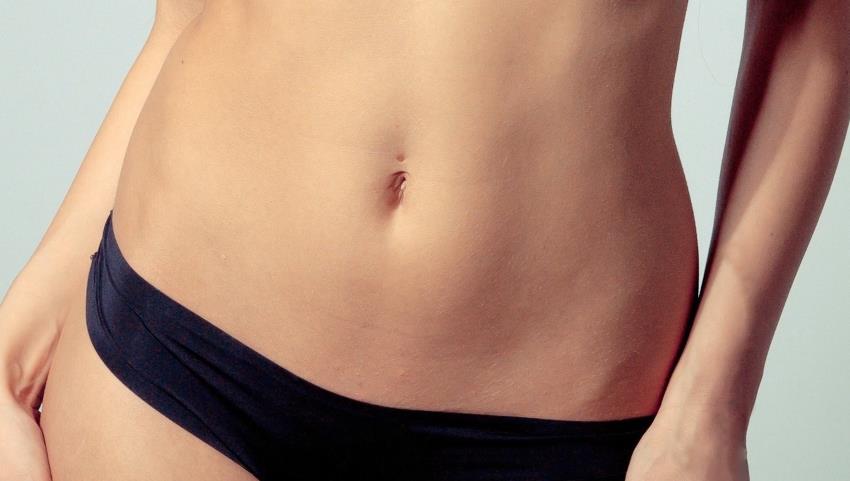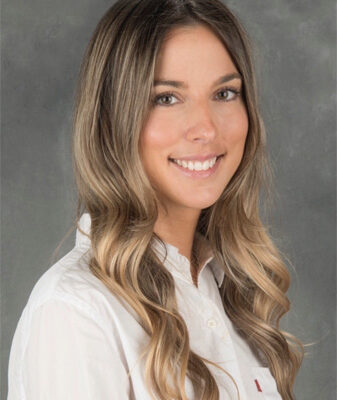The umbilicus, or navel, is a natural scar created when the umbilical cord falls off. Many believe that the navel is an attractive part of the human body.
However, its appearance can change over time due to weight gain or loss, pregnancy or piercings. It can also be convex (outie) or there may be excess skin which you find unappealing. The problem may also be a bothersome navel piercing. We think we have a solution for you.
An umbilicoplasty, or navel surgery, is a procedure which aims to improve the navel’s appearance. It often consists in turning a convex navel (outie) into a concave one (innie). The excess skin is shaped and tightened to give your navel a natural and appealing appearance.
Umbilicoplasties can be performed alone as minor surgeries or combined with other procedures such as an abdominoplasty, a mastopexy or a breast augmentation.

What does an umbilicoplasty entail?
An umbilicoplasy is a simple surgery done under local anesthesia. It consists in removing excess skin or scar tissue from a piercing by means of a subtle incision made around the new navel.
Frequently asked questions
Since an umbilicoplasty is a strictly cosmetic surgery, the RAMQ does not cover it.
Since an umbilicoplasty is a minor procedure performed under local anesthesia, it is suitable for anyone wishing to improve the shape of his or her navel after a piercing or weight variations.
However, let your surgeon know if you would like to combine it with another cosmetic surgery. He will then perform a complete physical examination.
Since an umbilicoplasty is a minor surgery, the related risks are relatively minimal. Immediate risks are as follows:
Bleeding
After any surgical procedure, there is normally some bleeding at the site of the wound. Such bleeding should slow over time and stop altogether after a few days.
Infection
An infection can sometimes occur despite the use of sterile surgical methods. Antibiotics will be prescribed to treat the infection if need be.
Wound dehiscence
Wound dehiscence refers to a complete or partial opening of the wound that is not healing well. This can be caused by an infection, a pocket of blood or by insufficient blood flow. Dehiscence is usually treated conservatively, that is, either by applying dressings and wound management, or through surgery to close the wound again.
Scars
A small fraction of patients develop serious scars, which are raised and hyperpigmented, over the long term. The scar will evolve over one to two years before achieving its final appearance. Depending on the case and on your surgeon’s clinical judgment, he can suggest treatment with cortisone injections or a minor surgery to correct the scar’s appearance.
Performed alone, an umbilicoplasty is a minor procedure which can easily be done under local anesthesia, just like a trip to the dentist. For this reason, you will be able to go back to work and engage in your daily activities on the day of your procedure.
You will have to keep your dressings on for 48 hours following the surgery, after which you may remove them and wash normally with water and soap.
There are no specific postoperative restrictions regarding physical activity for this procedure. However, you should avoid any intense physical activity for a week following your surgery in order for the wound to heal correctly.
If you are only undergoing an umbilicoplasty, you will be injected with a local anesthetic, just like at the dentist’s office. However, this procedure can be performed under general anesthesia if it is combined with a more complex surgery such as an abdominoplasty, a mastopexy or a breast augmentation.
The surgery generally lasts between 30 and 60 minutes. You must however allow for some time before entering the operating room (30-45 minutes). You may leave after the procedure.
If the umbilicoplasty is combined with another surgery, the length of the procedure will depend on the nature of the second surgery.
Generally, the cost of an umbilicoplasty is between $3,140 and $ 6,275. However, additional charges may apply if the patient has a particular condition or if different surgeries are combined.
Our specialists

PLASTIC AND AESTHETIC SURGEON
Dr. Camille Vallée-Gravel
- 450-241-6045

PLASTIC AND AESTHETIC SURGEON
Dr. Jennifer Dolmajian
- 450-241-6045
Cosmetic surgeries
Make an appointment with a surgeon
Call Us
We would be glad to help you through the process by answering all your questions and allaying your concerns.